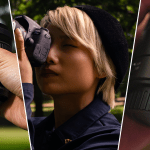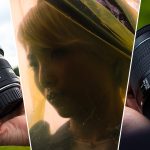In this article, we’re going to have a look at the famous Canon EF-S 24mm f2.8 ‘Pancake lens’. I’m going to show you what it can do, what it can’t do, and whether it’s a great fit for you.

Aperture & Focal Length
First off, let’s discuss some of the physical aspects of the Canon EF-S 24mm f2.8. In terms of aperture, it can open up to f2.8. That’s good compared to most other budget lenses, but prime lenses can usually open up more than that.
In case you’re unaware, a prime lens is a lens which does not zoom in. These are also known as lenses with a fixed focal length. Because this lens has a fixed focal length of 24mm, it is therefore prime.
This is not to be confused with the filter size, which is 52mm on this lens. The filter size basically tells you what filters you can get for this lens, and it’s unrelated to the focal length.
If you’re curious, an example of a zoom lens would be the Canon 18-55mm, or the Canon 75-300mm. The main benefit of a prime lens is that it tends to produce sharper images, whilst the benefit of a zoom lens is that it allows you to zoom back and forth, and thus change the focal length of the lens.
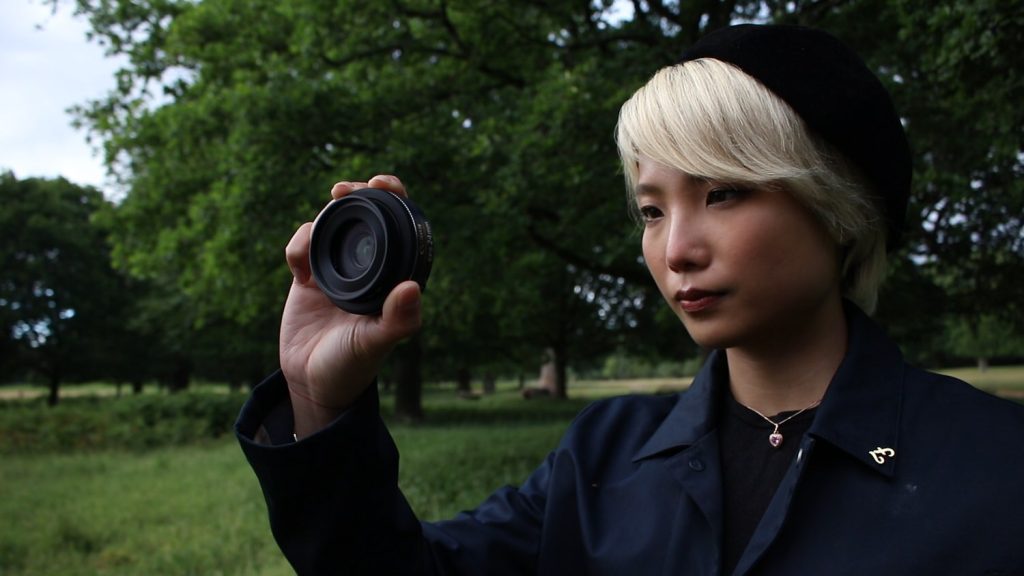
Size & Build
Now, let’s talk about the physical size of this lens. It measures approximately 68.2mm x 22.8 mm, and it weighs around 125g. The lens itself is actually quite tiny and flat, hence the nickname of the ‘pancake lens’.
This is great if you want to carry your camera around, as its diminutive size means that it will take up a lot less space in your bag, compared to other lenses.
The real question is, is this lens enough, or would you need to bring more with you? Stick around for the rest of the review to find out.
Wink, wink.

Image Quality
Now that we covered this lens’s physical size, let’s talk about what it can do optically.
So, as you might be able to figure out from the f2.8 in the name, this lens can open wide enough to actually give you some nice Bokeh. You would have to get quite close to your subject for this to happen though, as it is a fairly wide lens.
Minimum Focusing Distance
The minimum focusing distance on this lens is actually 0.52 ft, or 16cm, which means that you can get super close. You wouldn’t want to get that close when photographing humans though, as this would lead to very unflattering distortion of the subject’s face.
Speaking of distortion, this lens actually produces some fairly clean images, especially considering its price. The lens is at its sharpest in the middle of the image, and it gets a bit less sharp in the corners, which is quite common.
This isn’t usually a problem, as in most cases, your subject will be in the centre of the image, or somewhat to the side. It’s rarely the case that a subject finds itself in the corner of an image.
Vignetting
You also get some vignetting around the edges of the photos, which I personally don’t mind, as that tends to add depth to photos, especially when doing portraits.
Speaking of portraits, when I first grabbed this lens, I didn’t imagine it would be great at photographing people. I mean, any lens can do that, but my first impression was that the lens would distort faces so much, that it’d be practically unusable.
Well, I was wrong. Don’t believe me? I’ll show you some photos I took with this little lens in a bit, but first, there are a few more specs to cover.
Image Stabilisation
So, as you can see in the name, there is no IS present, which means that this lens has no built-in image stabilisation. This isn’t ideal if you want to do handheld video, as chances are, your camera will also not have in-body stabilisation.
Autofocus
Now, even though it won’t get you super stable footage, its autofocus capability is quite good, especially due to the STM motor.
Autofocusing is smooth and quiet. The lens does produce a minute mechanical sound when focusing, but it’s really quiet, and even the onboard mic of the camera has trouble picking it up.
Now that we’ve finished covering the specs, let’s have a look at some of the photos I’ve taken with this camera. Feel free to let me know which one was your favourite.
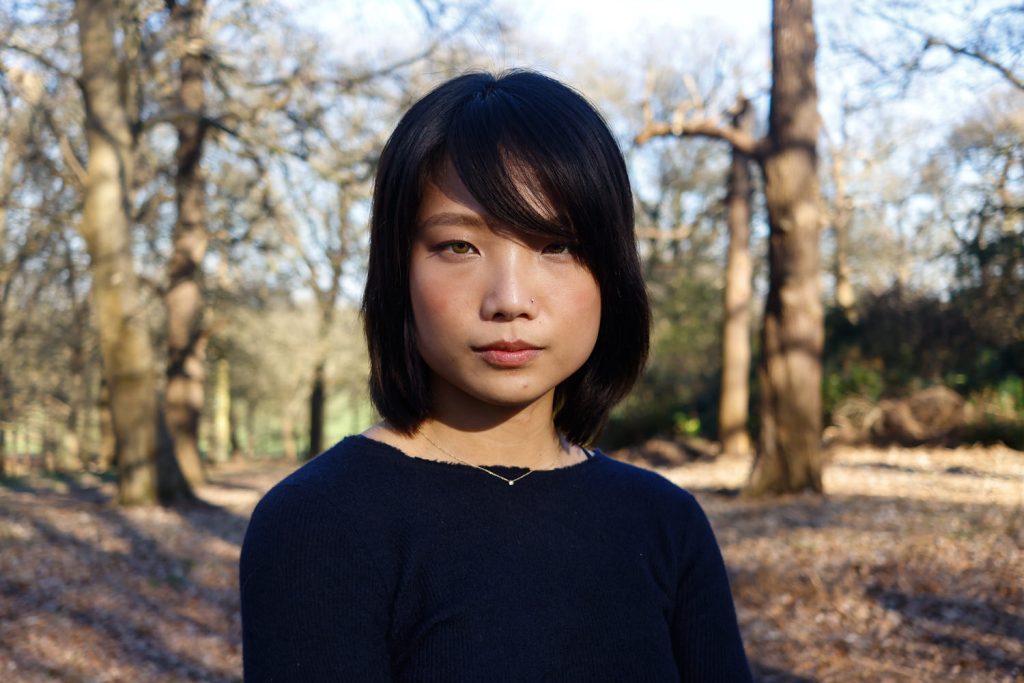
Compatibility
When it comes to compatibility, this lens will work with most Canon APS-C crop sensor cameras. These will generally be the more budget-friendly cameras.
Because of its EF-S mount, it will not work on full-frame cameras such as the Canon 6D, which I’ve actually reviewed recently.
Vlogging
Now, let’s talk about vlogging. Is this lens any good for that purpose?
Technically it is, but if you’re using it on a camera with a cropped sensor, like a Canon 77D for example, the real focal length will be 24mm x 1.6, which is 38.4mm. This is because cropped sensor cameras are slightly zoomed in, so they actually change the focal length of the lens.
What this means in practice is that the lens will be somewhat zoomed in. As a result, if you try to vlog with it, even if using a Gorillapod to put some distance between your body and the camera, you might find it to be a bit too zoomed in.
Also, the lens has no image stabilisation, so it won’t be able to smooth out the footage. You can obviously use image stabilisation when editing your video, but digital image stabilisation is only really useful for making small corrections to relatively smooth footage. If you try to use it on really shaky footage, you’ll get some weird results.
A better lens for vlogging would actually be the 18-55mm IS kit lens. This is because not only can it zoom out to 18mm, which will get more of your upper body in frame, but it also has IS, which means that it’s optically stabilising footage, in the lens itself.
The disadvantage that this lens has over the 24mm f2.8 lens is that at 18mm, it can only open up to f/3.5. This means that it will allow in less light, compared to the f/2.8.
YouTubers
How about using it for content creation, like making sit-down videos for YouTube?
Sure, it would work, but for those kinds of videos, I’d actually recommend a different lens. If you have a bit of room in your house, or wherever you’re recording, you’re probably better off getting something like the Canon 50mm f1.4, or f1.8. These lenses require a bit more space, as they’re more zoomed in, but they also allow in more light, as they can open up to f/1.4 and f/1.8 respectively.
This also means that you’ll get that nice out-of-focus background that makes videos look a lot more cinematic. I’ve reviewed quite a few lenses on my YouTube channel.
Control
Ok, so how does this lens handle?
Upon inspecting it, you’ll notice that you have an AF/MF button on the side, which allows you to switch between autofocus and manual focus.
If you choose to use manual focus, you’ll find that the focus ring turns smoothly and quietly.
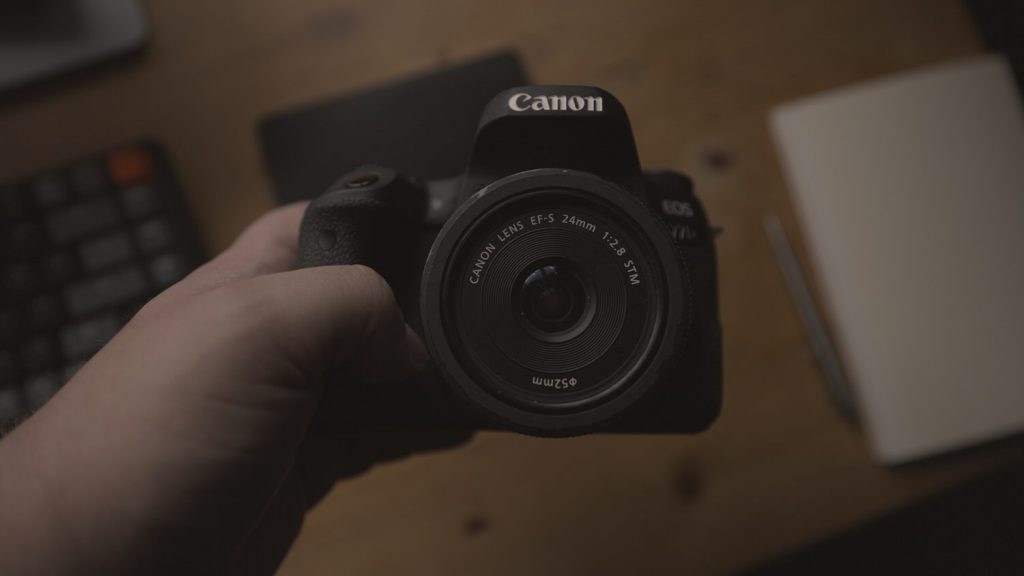
Longevity
So, how does this lens do in terms of durability?
Well, the lens itself is quite light. It doesn’t feel particularly sturdy, and I wouldn’t want to drop it on a hard surface, like concrete.
Of course, you can always get a UV filter for it to protect it. Since light would have to travel through more glass as a result, in order to get to the sensor, there is technically a small drop in quality, but it’s going to be imperceptible to most people.
For me, a tiny reduction in quality is worth knowing that I’m far less likely to break this lens accidentally. You can obviously also get a hood for it, and that would also protect it.
Conclusion
So, should you buy this lens?
Well, I have to say that the Canon 24mm f/2.8 STM lens is a lot more versatile than I originally thought. On a camera with a cropped sensor, you’re quite close to 35mm, which makes it not really amazing at anything in particular, but great at most things.
You can do portraits with it, as outlined earlier. You can do street photography. Actually, it might be amazing for street photography, not only because it’s unobtrusive, and thus less intimidating, but also because it’s kind of wide, allowing you to capture the ‘feel’ of a scene.
Landscape Photos
It’s obviously also good for landscape photography, capturing architecture, and basically anything else. It’s probably not great for product photography, if you want to get really close in order to showcase certain aspects of a product.
Wildlife Photography
Also, it’s not going to be very good at photographing wildlife either, as most birds won’t let you get anywhere near close enough for a lens like this.
Now, if I had to take one lens with me for the day, for general photography, like on a holiday or something, I’d actually probably choose this lens.
Sure, I prefer what the Canon 50mm f1.4 can do, as I mainly shoot portraits, but on a cropped sensor camera, 50mm is equivalent to 80mm, which means that you’ll have some trouble capturing the feel of a street, for example, if you don’t have enough room.
I hope you’ve found this useful. As I’ve said earlier, I’ve reviewed quite a few lenses on this site. Have a look down below for my link to the playlist, or click the card in the top right corner.
If you’d like to purchase any of the items I’ve mentioned in this article, or see how much they cost in your country, I have a link down below where you can view them.
Other Links
Thank you for reading my review of the Canon 24mm f/2.8 lens. I invite you to have a look at some of my other articles. We have something for everyone, whether you’re interested in audio, or cameras and lenses. Alternatively, if you prefer video reviews, feel free to have a look at my YouTube channel.
Product Links
Down below you will find all of the items I talked about in this article.

